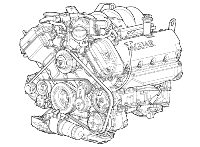Mechanical Engineering
Introduction
Mechanical Engineering is an engineering discipline that involves the application of principles of analysis, design, manufacturing, and maintenance of mechanical systems. It requires a solid understanding of key concepts including mechanics, kinematics, thermodynamics and energy. Mechanical engineers, use these principles and others in the design and analysis of automobiles, aircraft, heating & cooling systems, manufacturing plants, industrial equipment and machinery, medical devices and more.
Mechanical engineering is one of the oldest and most essential branches of engineering, without which any industry cannot function. Mechanical engineering students are trained in various areas including production, industrial engineering, R & D, refrigeration & air conditioning, power generating machines such as electricity generators, internal combustion engines, steam and gas turbines, jet and rocket engines, robots, hydraulic systems, measurement devices, product maintenance and materials handling systems etc. CAD/CAM courses assist the students designing components with greatest possible efficiencies. Mechanical Engineering is the broadest and most diverse engineering discipline. Not many people can perform their jobs without Mechanical Engineers. The comprehensive course curriculum and intensive practical training enables students to take on the challenges of broad ranging roles in various departments across a wide spectrum of industries.
Seats/Intake --- 66
Duration 4 years
What the students learn in mechanical engineering
Students learn following fundamental subjects of mechanical engineering:
- statics & dynamics
- strength of materials & solid mechanics,
- instrumentation and measurement,
- thermodynamics, heat transfer, energy conversion, and refrigeration / air conditioning,
- fluid mechanics/fluid dynamics,
- mechanism design (including kinematics and dynamics),
- manufacturing technology or processes,
- hydraulics & pneumatics,
- engineering design,
- Mechatronics and/or control theory.
- Drafting, CAD (usually including Solid modeling), and CAM.


